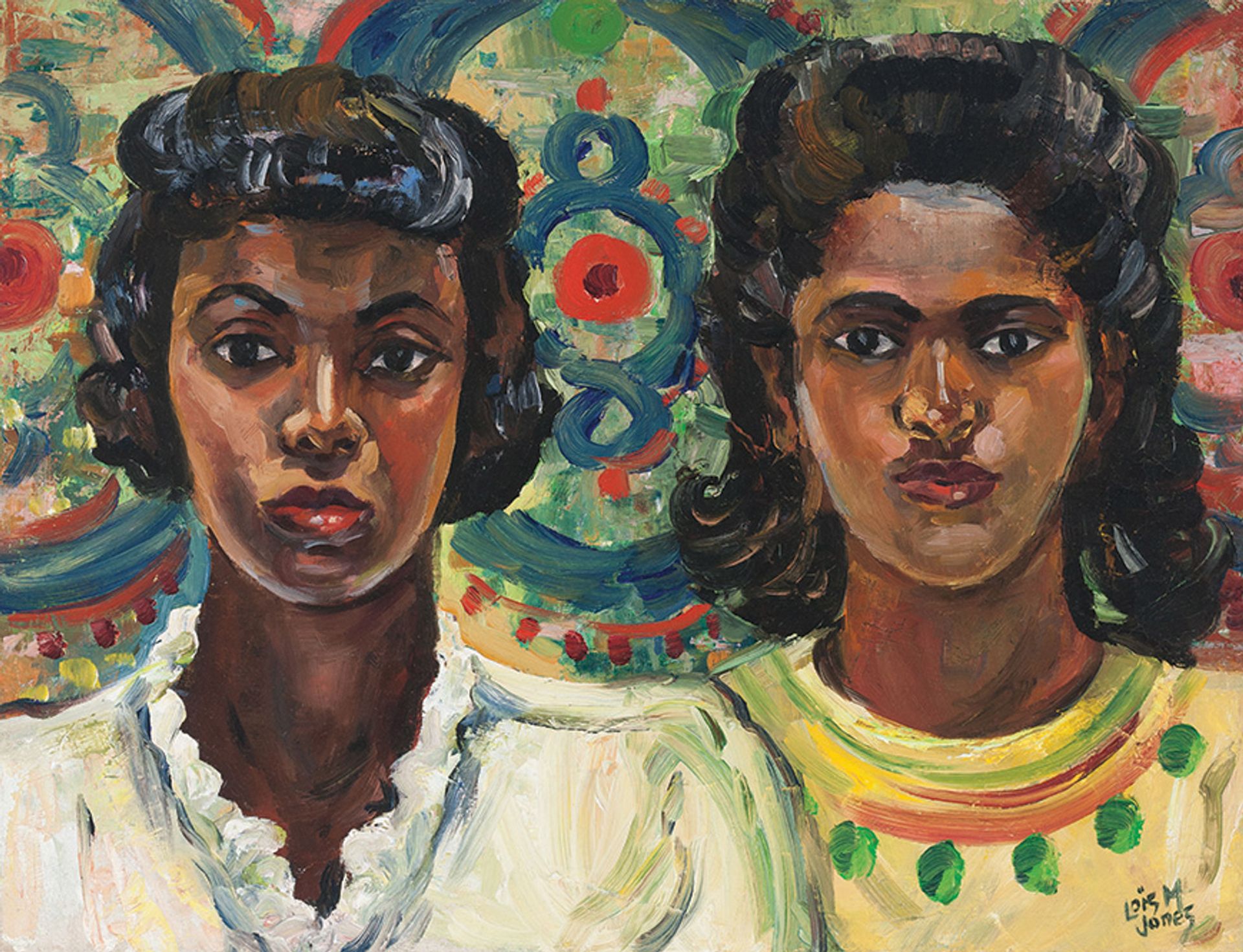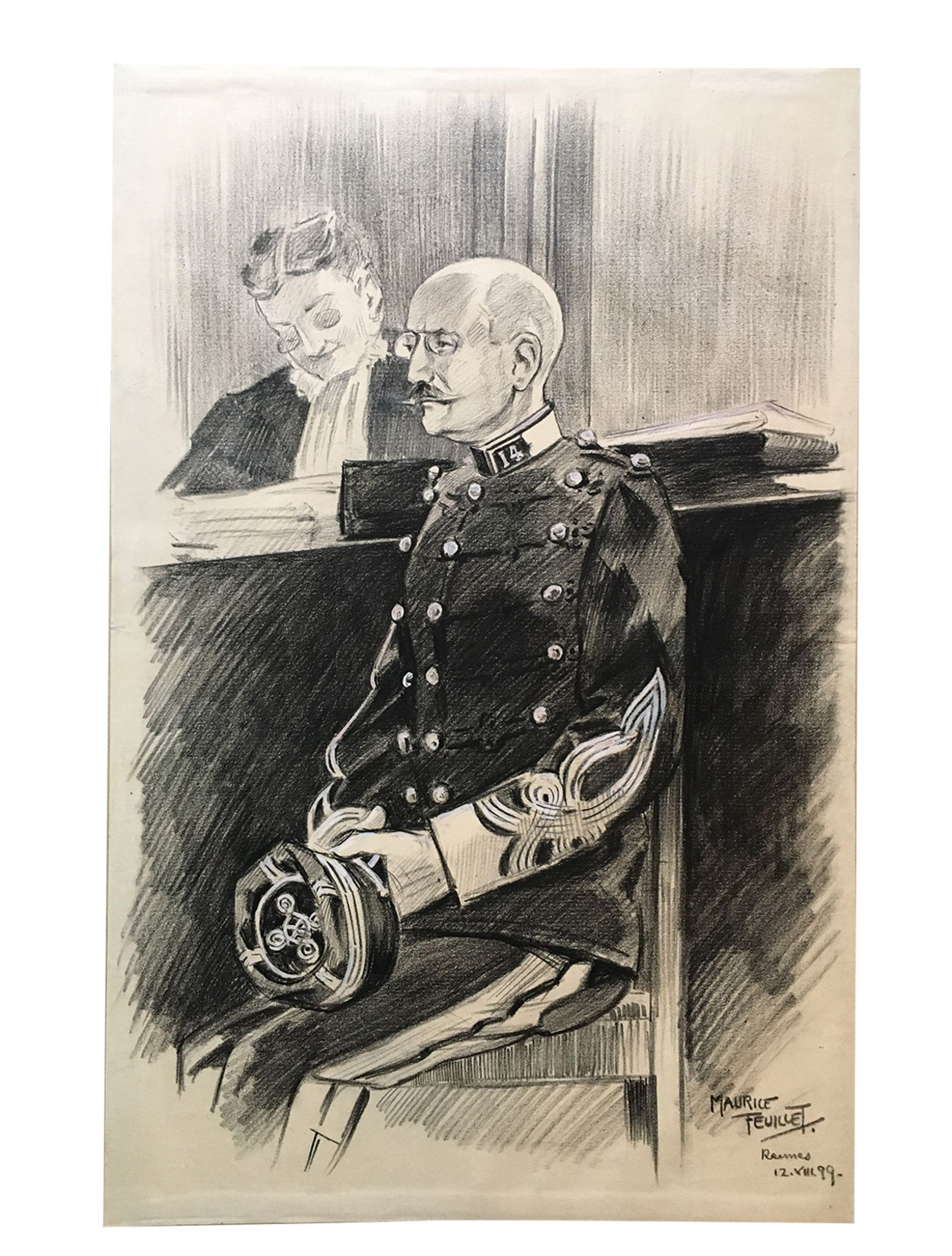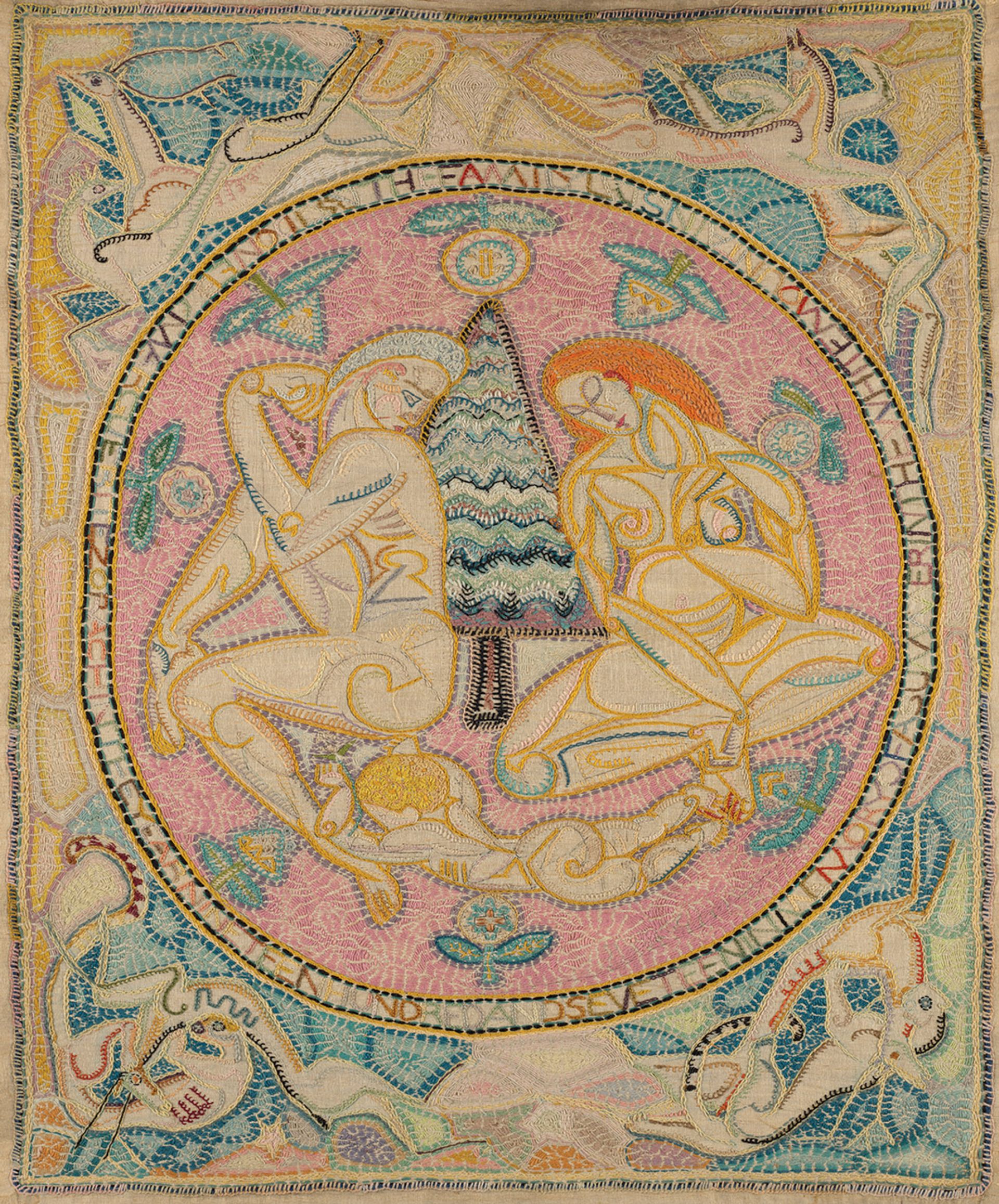
Courtesy of Bonhams
Sledge and flag from Ernest Shackleton’s Nimrod expedition
National Maritime Museum, Greenwich, London and the Scott Polar Research Institute, Cambridge
A sledge and a flag that were taken on Ernest Shackleton’s 1907-09 British polar expedition have been saved from leaving the UK after the National Heritage Memorial Fund provided £204,000 of the £227,500 needed to buy them. The items were previously owned by Eric Marshall, one of Shackleton’s companions on the expedition. Upon his death, Marshall bequeathed the artefacts to his school, which sold them in 2019 to an overseas buyer, prompting the UK government to place export bars on them. The sledge is due to go on view at the National Maritime Museum, while Marshall’s flag will rejoin Shackleton’s at the Scott Polar Research Institute.

Loïs Mailou Jones’s Untitled (Two Women, around 1945) Courtesy of Michael Rosenfeld Gallery LLC, New York, NY/ Baltimore Museum of Art
Works by female-identifying artists
Baltimore Museum of Art
Concluding a year-long, $2.6m initiative to purchase works by female-identifying artists, the Baltimore Museum of Art announced 33 acquisitions in late December. Among the highlights are Laura Aguilar’s Motion #59 (1999), which addresses her pain and triumphs as a queer Latina photographer; Betye Saar’s cage assemblage The Destiny of Latitude & Longitude (2010), evoking the terrors of the journey of slaves from Africa; Jaune Quick-to-See Smith’s painting Echo Map 1 (2000), which probes the intersection of Spanish-speaking immigrants and indigenous histories in the US; and Loïs Mailou Jones’s double portrait from around 1945, Untitled (Two Women), pictured above. In total, the programme added 65 works by female artists to the collection.

One of the courtroom sketches from the Dreyfus affair that the Museum of Jewish Art and History in Paris has acquired © MAHJ Paris
Maurice Feuillet’s courtroom drawings of the Dreyfus affair
Musée d’Art et d’Histoire du Judaïsme, Paris
The Museum of Jewish Art and History in Paris has acquired more than 200 courtroom sketches from the Dreyfus affair—one of the Belle Époque’s most divisive political scandals. Over a period of 12 years, the French Jewish military officer Alfred Dreyfus was improperly tried, convicted of treason and imprisoned in French Guyana. His trial became a subject of fierce public debate in France, with many intellectuals decrying a miscarriage of justice born of entrenched antisemitism. These drawings by the court illustrator Maurice Feuillet mainly document the 1898 libel trial of the writer Émile Zola after he published J’Accuse, the famous open letter accusing the French army of corruption in the case. Rediscovered last year by descendants of the artist in a cellar in Nantes, they were auctioned in December as 61 lots. The museum bought 57 of these for a total of €60,000.

Marguerite Zorach’s The Family (in Memory of a Summer in the White Mountains, 1917) Courtesy of the Cleveland Museum of Art
Modern embroidery and Art Deco metalwork
Cleveland Museum of Art
The Cleveland Museum of Art has announced a range of acquisitions, from a large-scale 1917 embroidery by Marguerite Zorach (pictured above) to 1930s Art Deco furniture designed by Paul Fehér. Zorach’s The Family (in Memory of a Summer in the White Mountains), executed in wool on silk, celebrates the union of domestic life and nature. The nude figures of the artist, her sculptor husband William and their infant son surround a tree, while stylised animals adorn the corners of the composition. The work will go on view this autumn, attesting to the achievements of the American modern embroidery movement, which has drawn more scholarly attention in recent decades. Fehér’s monumental metal Muse with Violin Screen, a mirror and a glass-topped console table—all produced by the Cleveland foundry Rose Iron Works—are now on show.


